Bonsai trees, a testament to patience and dedication, are miniature marvels that captivate with their beauty and intricate care requirements. Their health and longevity significantly depend on the soil mix used, making it a critical aspect of bonsai cultivation.
Navigating the world of bonsai soil mixes (or what many bonsai growers call “bonsai substrate”) can be a bit complex, as different types of bonsai trees have unique soil requirements. However, through careful experimentation and keen observation, you can find the ideal mix that allows your bonsai to flourish.
In this comprehensive guide, we aim to deepen your understanding of the proper bonsai soil mix and guide you in creating one suitable for your bonsai trees. We will cover:
- Understanding the roles and benefits of inorganic and organic components in bonsai soil mixes
- Guidelines for creating a balanced bonsai soil mix for various types of bonsai trees
- Steps to making your own bonsai soil, including sourcing quality components
- Troubleshooting common bonsai soil problems
Let’s start and help our bonsai trees thrive.
Understanding Bonsai Soil Components

In bonsai care, the soil is a critical part, featuring a unique mix of both inorganic and organic materials. Understanding these materials and their benefits is crucial for your bonsai’s health and zest.
Now, let’s break down the individual components that make up standard bonsai soil.
Inorganic Components
Inorganic components contain minimal to no organic matter. While akadama, pumice, and lava rock are commonly used, materials like kanuma, perlite, sand, zeolite, turface, grit, and rice rock also offer significant benefits.
Akadama, a type of clay from Japan, is favored for its superior water and nutrient retention properties while allowing excess water to drain, preventing root rot.
Pumice, a volcanic rock, aids drainage and adds structure to the soil. It also fosters pockets of air within the soil, promoting root aeration and overall plant health.
Lava rock, another byproduct of volcanic activity, is known for its excellent water retention and slow mineral release into the soil.
Kanuma, another Japanese clay product, is often used for acid-loving plants like Azaleas due to its acidic properties.
Perlite, a form of volcanic glass, is lightweight with exceptional water-draining capabilities.
Sand, especially coarse sand, can improve drainage and mimic natural growing conditions for certain species.
Zeolite, a microporous mineral, enhances the soil’s ability to hold and release nutrients.
Turface, a calcined clay product, is valued for its excellent water retention and nutrient-holding capacities.
Grit is often included in bonsai soil mixtures for its drainage properties and added weight to the pots.
Rice rock, although not commonly referred to, can be used as an alternative to traditional rocks for its similar properties and benefits.
Organic Components
Organic matter derives from living organisms, such as pine bark, peat moss, coco coir, and rice hulls.
Pine bark retains moisture and slowly releases nutrients back into the soil while contributing to its overall structure and aeration.
Peat moss, a sponge-like material, retains water and releases it slowly over time while slightly acidifying the soil, which can benefit certain bonsai types.
Coco coir, made from coconut husks, improves soil structure and fluid retention. It’s also naturally resistant to bacterial and fungal growth.
Rice hulls are the protective coverings of rice grains. They improve soil aeration and water retention but decompose relatively quickly, adding organic matter to the soil.
Bonsai Soil Mix Ratios
Throughout your bonsai cultivation journey, understanding how to create a proper bonsai soil mix is crucial to strike a balance between the inorganic and organic substances in your soil mix.
This method addresses the distinct needs of your bonsai tree. The subsequent tips will help you craft a comprehensive soil mix that meets the demands of different varieties of bonsai trees.
Guidelines for Creating a Balanced Bonsai Soil
These are general guidelines, and exact ratios can vary based on the tree species, age, size, and local climate.
For a basic bonsai soil mixture, a popular recipe is one-third akadama, one-third pumice, and one-third lava rock. This mix provides a good balance of water retention, drainage, and aeration.
Organic matter like pine bark, peat moss, or coco coir can be added to this mix in a small percentage of the overall soil mix. Organic components enrich the soil with nutrients and improve its ability to retain water.
For bonsai trees that prefer acidic soil, such as azaleas, a generous percentage of kanuma is suitable. Grit or sand can be added to improve drainage, especially for species that don’t tolerate waterlogged roots.
Adjusting Ratios Based on Specific Tree Requirements and Local Climate Factors
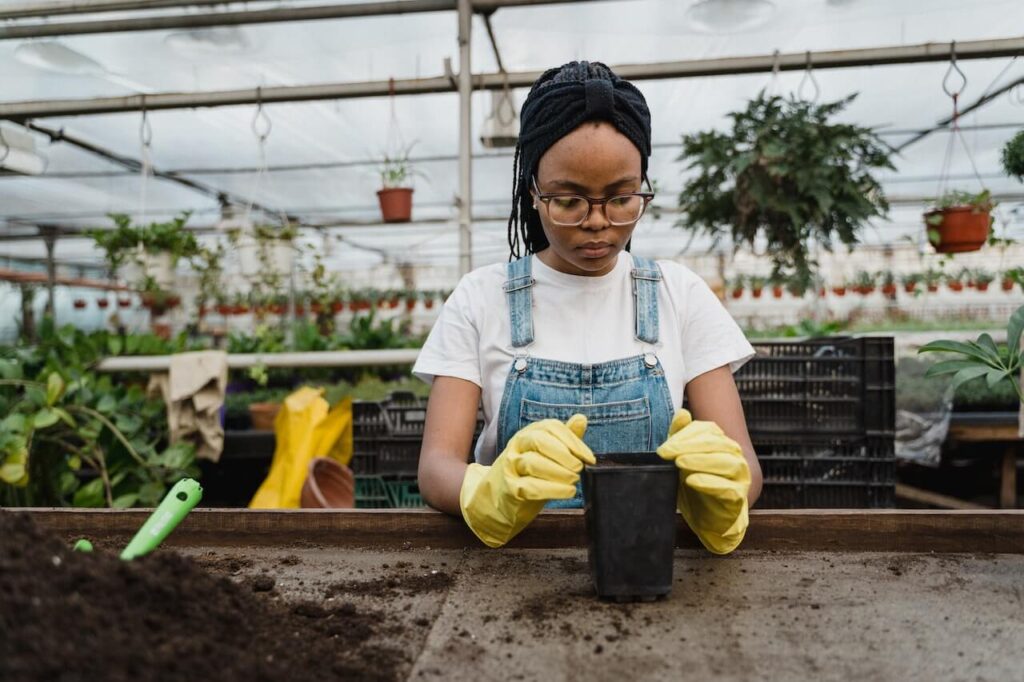
Different bonsai species have unique requirements, and it’s important to adjust your soil mix accordingly. Pine trees, for example, prefer well draining soil components, so the ratio of pumice or grit might need to be increased.
On the other hand, tropical species like ficus prefer more water-retentive soils and higher amounts of akadama or coco coir could be beneficial.
Local climate factors also play a crucial role in determining the right soil mix.
In dry climates, increasing the proportion of water-retentive components like akadama or peat moss can help keep the bonsai hydrated. In contrast, if you live in a region with high rainfall, improving drainage with more pumice or grit can prevent root rot.
Always observe your bonsai’s health and adjust the soil mix as needed. Signs of overwatering (like yellow leaves) might indicate a need for better drainage, while signs of underwatering (like wilting or browning leaves) could mean that more water-retentive components are required.
Importance of Considering Water Retention, Drainage, and Aeration
When creating your proper bonsai soil mix, it’s essential to consider three key factors: water retention, drainage, and aeration.
A good bonsai soil mix should retain enough water to keep the tree hydrated between waterings but drain excess water quickly to prevent root rot. It should also allow air to reach the roots, which is essential for healthy growth.
Fluid retention is primarily provided by components like akadama, peat moss, or coco coir.
Drainage is facilitated by inorganic materials like pumice, grit, or sand.
Aeration is achieved through the soil structure, which is influenced by all components but particularly by coarse materials like lava rock or perlite.
Making Your Own Bonsai Soil Mix
Creating your own bonsai soil mix can be a fulfilling and exciting aspect of growing bonsai plants. It allows you to have control over the quality and ratio of the components, customizing the blend to cater specifically to your bonsai’s needs.
Let’s delve into the process, from sourcing and selecting quality ingredients to mixing them properly and exploring the convenience of premixed bonsai soil.
Acquiring High-Quality Soil Components
The first stage in creating a bespoke bonsai soil mix involves gathering superior-quality components. As discussed earlier, your mix will require both organic and inorganic elements, each contributing significantly to the well-being and growth of your bonsai tree.
Having already explored the characteristics of potential inorganic and organic matter in one section above, let’s focus on how to source these ingredients.
Look for well-established garden centers or online retailers that specialize in bonsai care. Customer reviews and recommendations from fellow bonsai enthusiasts can guide you toward reliable sources.
The Art of Combining Bonsai Soil Components
Having procured your chosen components, it’s time to blend them to create a proper bonsai soil mix.
While the precise ratios will depend on your specific bonsai tree species and its unique needs, it is recommended to use two parts inorganic material to one-part organic.
For more information on soil mix ratio, check our detailed blog post on mixing bonsai soil.
Before starting the process of creating your ideal bonsai substrate, ensure you have the following tools and materials:
Sifter
This is essential for removing fine particles from the inorganic components.
Large container
You’ll need this for mixing the components together.
Stirring tool
This could be a large spoon or stick used to evenly distribute the components.
Now, let’s dive into the steps:
1. Start by sifting the inorganic components to remove dust and fine particles.
2. Mix these sifted components in a large container.
3. Add the organic matter to the inorganic mix.
4. Blend the components until you reach a harmonious consistency.
5. Test the mixture. If the soil drains too quickly, add more organic matter to increase fluid retention. If the soil holds excessive water, add more inorganic material to improve drainage.
Bear in mind, the ideal bonsai soil blend is as unique as your bonsai tree itself.
Like a devoted artist to their canvas, experiment with various proportions until you discover the blend that truly complements your bonsai.
In our comprehensive blog post on bonsai soil mixing, we delve deeper into specific factors like tree species and climatic conditions that play a pivotal role in crafting personalized bonsai soil mixes.
Considering Premixed Bonsai Soil
While concocting your own bonsai soil mixtures can be a fulfilling venture, it may not suit everyone’s preferences or schedules.
For those just embarking on their bonsai journey or those with a packed schedule, premixed bonsai soil offers a delightful shortcut.
These ready-made bonsai blends skillfully marry the right proportions of inorganic and organic elements, making them a versatile choice for a multitude of bonsai types. They take the mystery out of crafting the perfect soil mix and ensure your bonsai’s nutritional needs are well met.
The market is abundant with diverse brands, each celebrating its own signature mix. As with individual components, opt for a reputable brand, peruse reviews, and seek advice from bonsai communities.
Troubleshooting Common Bonsai Soil Mix Problems

Perfecting your soil mix can sometimes be a challenging task. Here we’ll explore how to troubleshoot common issues related to fluid retention, drainage, and aeration in your bonsai soil mixtures.
Identifying Signs of Inadequate Water Retention, Drainage, or Aeration
In the world of bonsai cultivation, the soil is more than just ‘dirt.’ It’s the nourishing bed that sustains your bonsai’s life. If your bonsai tree shows signs of distress, the soil mix could very well be the culprit.
Inadequate Water Retention
When your bonsai’s leaves show signs of wilting or yellowing, and the soil rapidly dehydrates after watering, it’s a distinct signal of poor fluid retention.
This might stem from a scarcity of organic substances in your soil blend. Much like a sponge, these organic materials soak up water and gradually release it to the thirsty roots of your bonsai.
Poor Drainage
Conversely, if the soil stays soggy for too long after watering, it might indicate poor drainage.
Overly moist soil can lead to rotting of roots, a serious condition that can potentially kill your bonsai. Yellow leaves or a musty smell are often telltale signs of this issue.
Insufficient Aeration
Finally, if your bonsai’s growth seems stunted or its leaves lack vibrancy, it might be suffering from insufficient aeration.
Roots need oxygen to absorb nutrients effectively, and compacted soil can suffocate them.
Adjusting Your Soil Mix to Solve Common Issues
Once you’ve identified the problem, the next step is to adjust your soil mix accordingly.
Improving Water Retention
To enhance fluid retention, increase the proportion of organic material in your mix.
Organic potting compost, peat moss, or coconut coir are excellent choices. They not only improve moisture retention but also enrich the soil with vital nutrients.
Enhancing Drainage
To resolve drainage issues, add more inorganic materials, such as akadama, pumice, or fine gravel.
Boosting Aeration
To boost aeration, consider adding coarse sand or perlite to your soil mix.
These materials prevent soil compaction and promote root health by allowing air to reach the roots.
Creating Your Own Bonsai Soil Mix: DIY Recipes And Techniques
A bonsai soil mix is fundamental to the health and vitality of your miniature tree. Just as a strong foundation is vital for any building, the right soil blend lays the groundwork for a thriving bonsai.
While the aesthetic appeal of bonsai trees often garners attention, it’s the unseen elements, like the soil, that play a pivotal role in their overall well-being. Crafting the right mixture isn’t just about mixing random components; it’s about understanding the unique needs of your bonsai and ensuring its roots have the best environment to flourish.
This guide aims to shed light on the nuances of creating an optimal mix and the profound impact it can have on your bonsai’s growth and health.
The Science Behind Bonsai Soil Mix
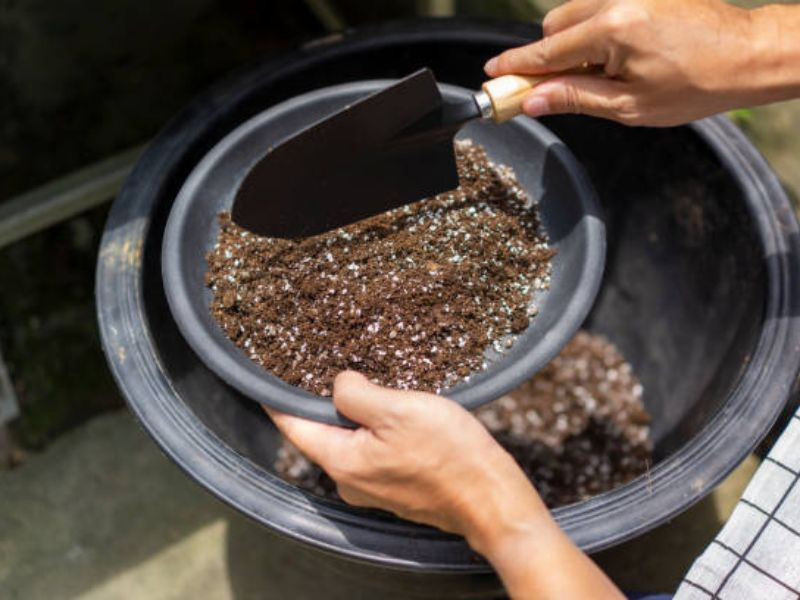
Bonsai soil mixtures are meticulously crafted blends that cater to the specific needs of these miniature trees, setting them apart from your typical garden or potting soils.
Standard garden soil is often dense, retaining more moisture which can be ideal for a wide variety of plants in a garden setting. But for bonsai, this density and moisture retention can be detrimental, leading to root rot and inhibiting proper aeration.
On the other hand, regular potting soil, while lighter than garden soil, still doesn’t provide the rapid drainage and aeration that bonsai trees demand.
Bonsai soil mixes stand out in several ways:
- Well Draining: Ensuring the roots are never left sitting in water, bonsai soil blends prioritize quick drainage. This quality prevents the commonly feared root rot, ensuring the tree’s longevity.
- Proper Aeration: A good soil mix for bonsai is structured to allow fresh air to continuously reach the roots. This ensures the roots receive ample oxygen, which is vital for their growth and overall health.
- Water Retention Balance: While it might sound contradictory to the first point, bonsai soil mixes do retain some water – but just the right amount. It’s a delicate balance between holding enough moisture to nourish the tree and preventing waterlogged conditions.
- Component Diversity: Unlike normal potting soil, which often has a uniform composition, bonsai soil can comprise a wide range of organic and inorganic components, each adding a unique benefit to the mix.
It becomes clear that this isn’t just about dirt. It’s a refined blend of components, each serving a purpose to create the optimal environment for these intricate trees to thrive.
Essential Components Of An Effective Soil Mix for Bonsai
When curating a successful soil mix for bonsai, understanding and balancing the organic and inorganic elements is paramount. Both types of components play distinct roles, contributing to the well-being of the bonsai in unique ways.
Organic Elements In Bonsai Soil
Organic components in a soil mix for bonsai refer to materials that once were alive or are derived from living organisms. These elements introduce essential nutrients into the soil and play a critical role in moisture retention.
- Pine Bark: A favorite among bonsai enthusiasts, pine bark provides an excellent balance of water retention while still allowing for proper aeration. As an organic component, pine bark slowly decomposes, releasing nutrients over time.
- Peat Moss: Valued for its water retention capabilities, peat moss is often used in bonsai soil mixes to ensure the tree receives adequate moisture, especially during dryer periods.
- Decomposition: Over time, organic matter breaks down, which is a natural process. However, the rate of decomposition can be faster in a confined bonsai pot than in nature. As organic materials decompose, they can compact, potentially impeding drainage. Thus, periodic repotting and soil refreshment are essential to prevent these issues.
Inorganic Elements In Bonsai Soil
Inorganic materials in the soil mix for bonsai are minerals or non-living elements that introduce structure and drainage capabilities to the soil, without the risk of decomposition.
- Lava Rock: Lava rock is a popular inorganic component. Its porous nature means it offers excellent water retention while also facilitating drainage. It’s also great for aeration, providing roots with ample fresh air.
- Calcined Clay: This fired clay product is prized for its ability to retain water and nutrients without becoming compacted. It’s a stable inorganic option that provides consistent performance over time.
- Volcanic Soil: Known for its sharp, irregular grains, volcanic soil or pumice ensures a well-draining soil mix. It’s lightweight and aids in preventing soil compaction.
- Balance: The true art of bonsai soil mixing lies in balancing these inorganic elements with organic ones. While inorganic components offer structure, drainage, and aeration, they must be paired with organic materials to ensure the soil remains nourishing and supportive to the bonsai tree.
Just as we require a mix of proteins, carbs, and vitamins, a bonsai tree thrives when its roots are surrounded by a well-thought-out blend of organic and inorganic elements.
Tailoring Your Bonsai Soil Mix for Tree Varieties
Much like diverse plant species in a garden or forest possess their own set of needs, bonsai trees similarly hold distinct requirements based on their respective species. Therefore, when crafting a soil mix for bonsai, it’s imperative to grasp these unique necessities and thoughtfully tailor the mixture components in response.
Deciduous Bonsai Trees
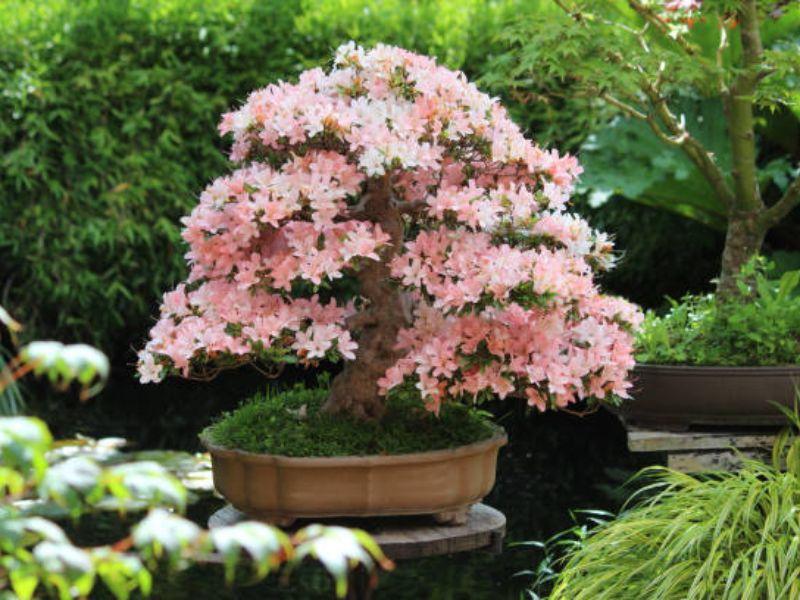
Deciduous trees, known for shedding their leaves annually, have specific soil requirements that differ from their evergreen counterparts. Here’s how you can tailor the soil mix for them:
- Water Retention: Deciduous trees generally prefer a soil mix with slightly higher water retention. Incorporating organic materials like peat moss can be beneficial.
- Aeration: While water retention is crucial, it’s equally vital to ensure proper aeration to prevent root rot. A mixture of inorganic soil components, such as calcined clay or crushed lava rock, can help maintain this balance.
- Nutrient Needs: These trees have a robust growth phase during spring and early summer. Enriching the soil mix with organic components that decompose over time can provide a steady release of nutrients during this period.
Coniferous Bonsai Trees

Coniferous trees, or evergreens, retain their leaves throughout the year. Their soil preferences are distinct:
- Drainage: Most coniferous species favor well-draining soil. Emphasizing inorganic components like volcanic soil or lava rock can facilitate this.
- Stability: Conifers have a slower growth rate than deciduous trees, meaning they can remain in the same pot for a more extended period. A stable mix that resists decomposition is ideal, so the balance might lean more towards inorganic materials.
Tropical And Subtropical Bonsai Trees
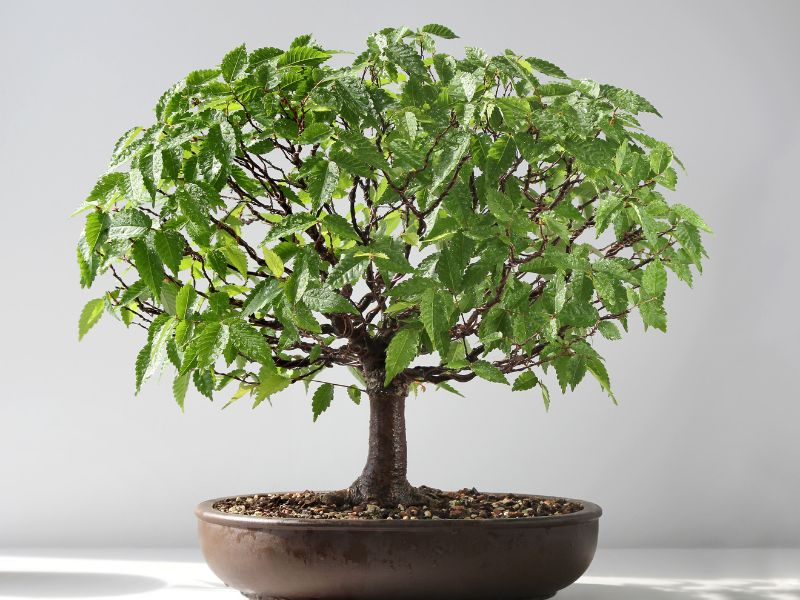
These tree varieties, hailing from warmer climates, have different soil demands:
- Moisture Balance: While they love warmth, they also need a consistent moisture level. A soil mix for bonsai for these species might have a higher peat moss or pine bark content.
- Frequent Refreshment: Given the year-round growth of many tropical species, the organic matter in their soil can break down more rapidly. This necessitates more frequent soil refreshment and repotting.
Broadleaf Evergreen Bonsai Trees
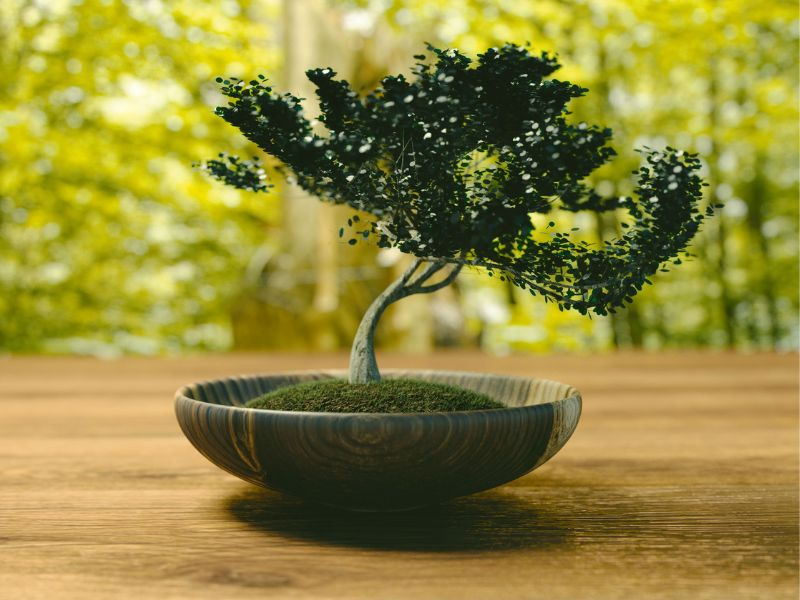
These trees retain their leaves throughout the year, but unlike conifers, they have broad leaves.
- Moisture and Drainage: They require a well-balanced soil mix for bonsai that retains moisture without becoming soggy. Incorporating elements like pine bark or peat moss, paired with inorganic components for drainage, works best.
- Nutrient-rich Mix: Broadleaf evergreens benefit from a soil mix that provides consistent nutrients. Organic materials that decompose slowly are ideal.
Fruit-bearing Bonsai Trees
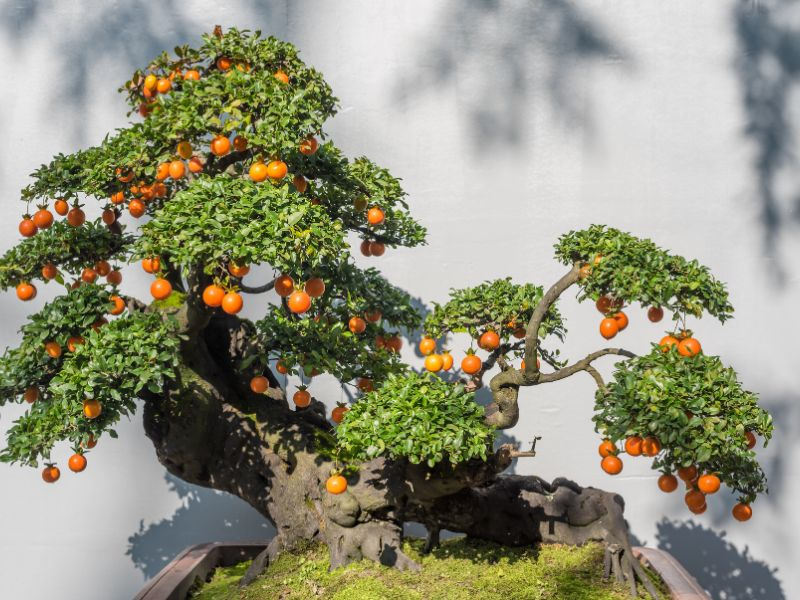
Growing fruit on a miniature tree requires a well-balanced and nutrient-rich soil.
- Sustained Nutrition: Since these trees bear fruit, they need additional nutrients, especially during the fruiting season. A good mix of organic materials that release nutrients over time is beneficial.
- Good Drainage: To prevent diseases commonly found in fruiting plants, ensuring good drainage with inorganic materials like calcined clay or crushed lava rock is essential.
It’s not just about having a great soil mix; it’s about having the right soil mix for bonsai tailored for your specific tree.
DIY Bonsai Soil Mix Recipes For Success
Crafting your own soil mix for bonsai can be an enriching experience, allowing you to customize the blend based on the specific needs of your bonsai tree. Not only does this ensure optimal health for your tree, but it also gives you a profound sense of connection with the bonsai cultivation process. Here’s a step-by-step guide to creating some tried-and-true bonsai soil blends:
Basic Soil Mix for Bonsai
A versatile mix suitable for a wide variety of bonsai trees.
Ingredients:
Combine 1 part pine bark,
Add an equal part of lava rock, and
Mix in a similar portion of volcanic soil.
Method:
- Start by sifting the pine bark to remove any fine particles or dust.
- Mix the pine bark with lava rock and volcanic soil thoroughly.
- Ensure consistency and even distribution of all ingredients.
Mix For Deciduous Trees
Specially formulated to cater to the water and nutrient needs of deciduous species.
Ingredients:
2 parts pine bark or peat moss (for moisture retention)
1 part crushed lava rock (for drainage)
1 part calcined clay (for structure)
Method:
- Sift pine bark or peat moss to remove dust and fine particles.
- Combine with crushed lava rock and calcined clay, ensuring a homogeneous mixture.
Mix For Coniferous Trees
This mix emphasizes drainage while providing stability for slower-growing conifers.
Ingredients:
1 part pine bark
2 parts volcanic soil or pumice (for enhanced drainage)
1 part crushed lava rock
Method:
- Combine all components, ensuring an even distribution of particles.
- The increased amount of volcanic soil helps ensure proper drainage for these species.
Mix For Tropical Bonsai
Tailored to the unique moisture and nutrition needs of tropical varieties.
Ingredients:
2 parts peat moss (for consistent moisture)
1 part volcanic soil (for drainage)
1 part organic bonsai soil (for nutrients)
Method:
- Blend the ingredients thoroughly, ensuring the peat moss is well-distributed to maintain moisture levels.
Mix For Fruit-Bearing Bonsai Trees
Formulated to support the added nutritional needs of fruiting trees.
Ingredients:
2 parts organic bonsai soil (nutrient-rich)
1 part pine bark (for structure and some moisture retention)
1 part crushed lava rock (for drainage)
Method:
- Mix ingredients ensuring an even distribution, prioritizing the nutrient-rich organic bonsai soil component.
While these recipes offer a good starting point, the art of bonsai is inherently about observation and adjustment. Keep an eye on your tree’s health, and don’t hesitate to adjust the soil components based on its specific needs.
Drainage And Aeration: The Lifelines Of A Healthy Bonsai Soil Mix
A bonsai soil mix that is properly aerated and drains well is fundamental to the health and growth of your bonsai tree. Here’s why they are essential and techniques to ensure your bonsai soil blend excels in both areas:
Why Drainage And Aeration Matter
- Root Health: Bonsai roots can easily succumb to root rot if they remain in constantly soggy soil. Well-draining soil ensures that excess water escapes, preventing this detrimental condition.
- Oxygen Supply: Roots don’t just absorb water; they also need fresh air. A soil mix that allows air to reach the roots is vital for the tree’s overall health and metabolic processes.
- Nutrient Uptake: Proper aeration facilitates the efficient absorption of nutrients from the soil, ensuring the tree remains vibrant and grows optimally.
Techniques For Enhanced Drainage And Aeration
- Incorporate Inorganic Components: Materials like lava rock, pumice, and calcined clay are excellent for promoting drainage. Their porous nature ensures excess water is quickly drained away, and their rigid structure aids in soil aeration.
- Sift Your Soil Components: Before mixing, sift the soil components to remove the finest particles. This ensures that the larger particles promote air pockets, essential for aeration.
- Use Bonsai Pots with Adequate Drainage Holes: Ensure your bonsai pots have enough drainage holes, and consider elevating them slightly off the ground. This ensures that water can escape quickly.
- Periodic Soil Refreshment: Over time, organic matter breaks down, and the soil might become compacted. Regularly refreshing the soil mix ensures it remains aerated and continues to drain well.
- Proper Watering Techniques: Don’t just focus on the soil. How you water your bonsai also affects drainage and aeration. Watering in a gentle, circular motion ensures even distribution, and allowing the water to run out of the drainage holes ensures proper moisture levels.
A bonsai tree, in its essence, is a testament to the balance of nature. And in this delicate balance, drainage and aeration play pivotal roles. While the aesthetic of a bonsai is its visual appeal, its life force relies on what happens beneath the surface.
Remember, the perfect bonsai soil mix isn’t just about the right ingredients; it’s about the hands that meld them together, the eyes that observe the subtle shifts in the tree’s demeanor, and the heart that pours love into every grain and particle. As you continue on this journey, may your bonsai trees thrive, and may your bond with them deepen.


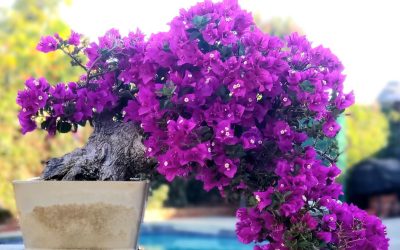
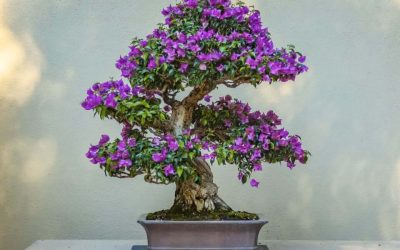
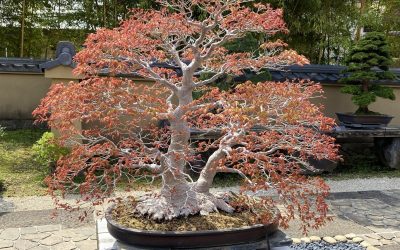
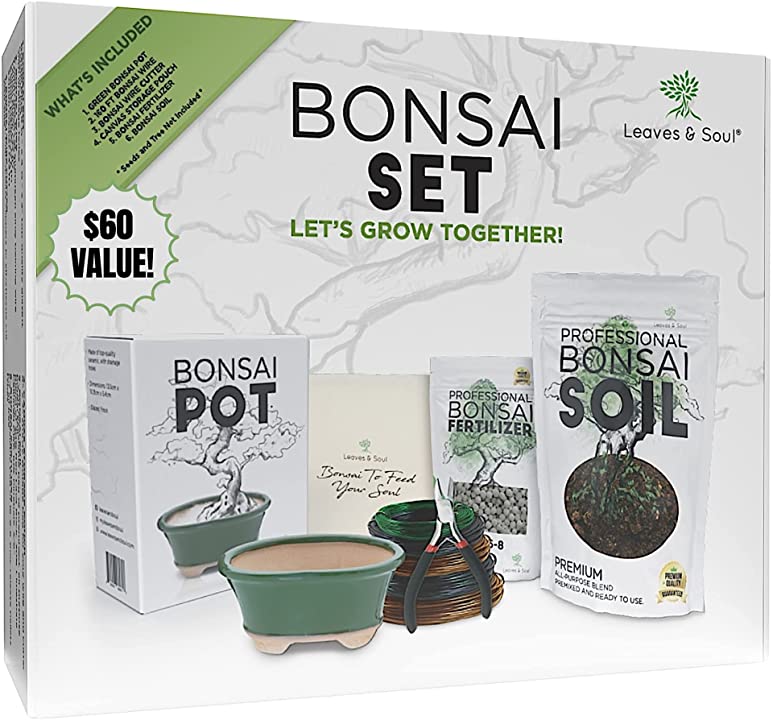
0 Comments